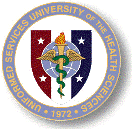United States Department of Defense

Uniformed Services University of the Health Sciences
Date of this Version
2013
Citation
NeuroImage 82 (2013) 510–516
Abstract
Background: White matter (WM) integrity declines with normal aging. Physical activity may attenuate age-related WM integrity changes and improve cognitive function. This study examined brain WM integrity in Masters athletes who have engaged in life-long aerobic exercise training. We tested the hypothesis that life-long aerobic training is associated with improved brain WM integrity in older adults. Methods: Ten Masters athletes (3 females, age = 72.2 ± 5.3 years, endurance training >15 years) and 10 sedentary older adults similar in age and educational level (2 females, age = 74.5 ± 4.3 years) participated. MRI fluid-attenuated-inversion-recovery (FLAIR) images were acquired to assess white matter hyperintensities (WMH) volume. Diffusion tensor imaging (DTI) was performed to evaluate the WM microstructural integrity with a DTI-derived metric, fractional anisotropy (FA) and mean diffusivity (MD). Results: After normalization to whole-brain volume, Masters athletes showed an 83% reduction in deep WMH volume relative to their sedentary counterparts (0.05 ± 0.05% vs. 0.29 ± 0.29%, p b 0.05). In addition, we found an inverse relationship between aerobic fitness (VO2max) and deep WMH volume (r = −0.78, p < 0.001). Using TBSS, Masters athletes showed higher FA values in the right superior corona radiata (SCR), both sides of superior longitudinal fasciculus (SLF), right inferior fronto-occipital fasciculus (IFO), and left inferior longitudinal fasciculus (ILF). In addition, Masters athletes also showed lower MD values in the left posterior thalamic radiation (PTR) and left cingulum hippocampus. Conclusions: These findings suggest that life-long exercise is associated with reducedWMH and may preserveWM fiber microstructural integrity related to motor control and coordination in older adults.


Comments
This article is a U.S. government work, and is not subject to copyright in the United States.